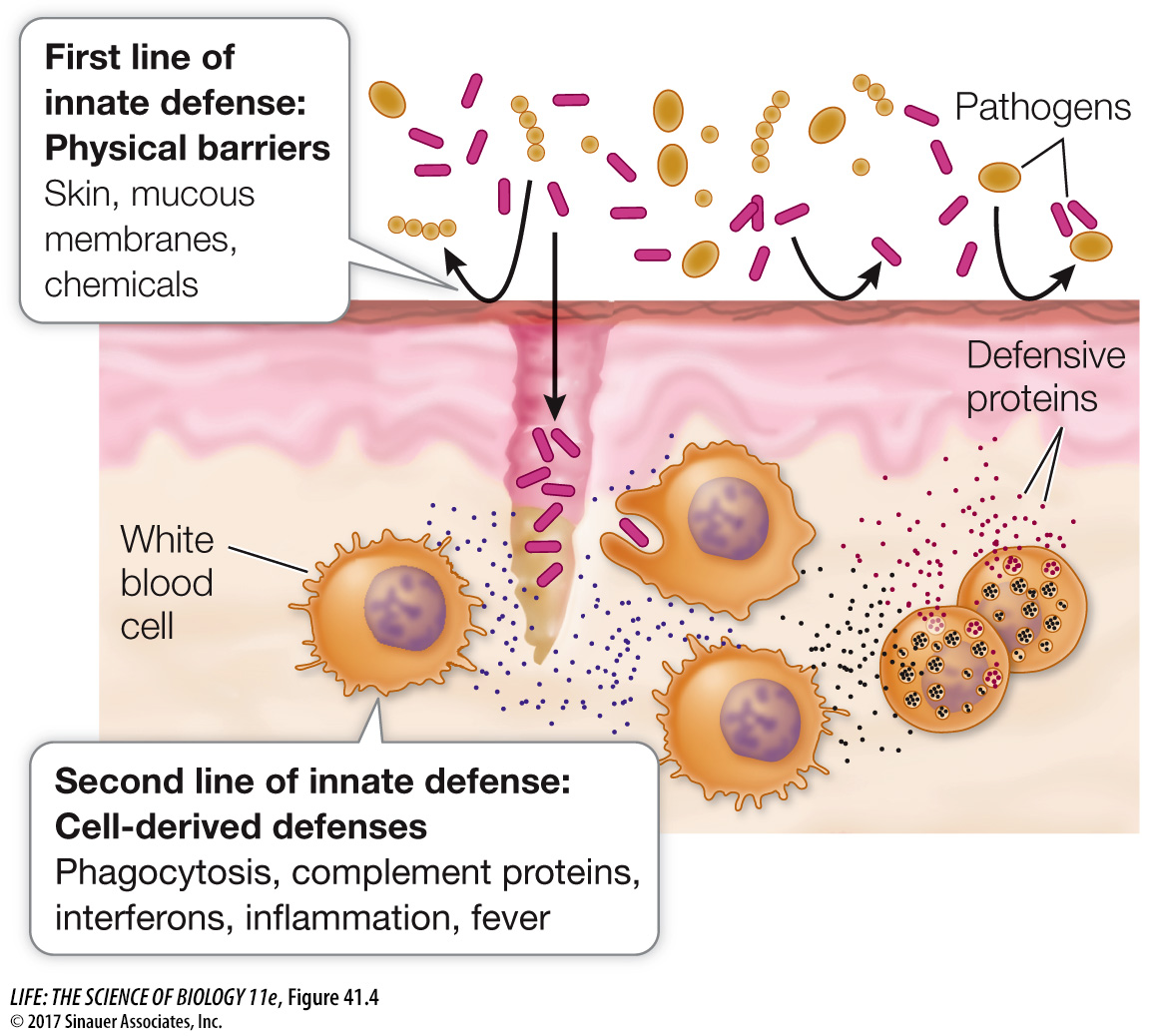key concept
41.2
Innate Defenses Are Nonspecific
key concept
41.2
Innate Defenses Are Nonspecific
Innate defenses are general protection mechanisms that attempt to stop pathogens from invading the body or to quickly eliminate those that do manage to invade. They are genetically programmed (innate) and “ready to go,” in contrast to adaptive responses, which take time to develop after a pathogen or toxin has been recognized as nonself.
focus your learning
Innate immunity is applied to any potential harmful invader.
Physical barriers, such as skin, are the first line of innate defense.
Inflammation involves recruitment of cells and defensive molecules to an area damaged by a pathogen or other injury.
Innate immunity is sometimes described as nonspecific immunity because it is applied indiscriminately to any potentially harmful invader. There are two lines of innate defense (Figure 41.4). The first line of innate defense is encountered by a potential pathogen as soon as it lands on the surface of an animal. Consider a pathogenic bacterium that lands on human skin. The challenges faced by the bacterium just to reach its target are formidable:
The physical barrier of the skin: Bacteria rarely penetrate intact skin, which has about 30 cell layers; by the same token, broken skin increases the risk of infection.
The saltiness and dryness of skin: This environment may not be hospitable to the growth of the bacterium.
The presence of normal flora: Bacteria and fungi that normally live and sometimes reproduce in great numbers on our body surfaces without causing disease will compete with pathogens for space and nutrients.

Media Clip 41.1 The Chase Is On: Phagocyte versus Bacteria
If a pathogen lands inside the nose or another internal organ, it faces other innate defenses:
Mucus is a slippery secretion produced by mucous membranes found at the inner surfaces of the nose (as well as the digestive, respiratory, and urogenital systems). Mucus traps microorganisms so they can be removed by the beating of cilia (see Figure 5.17), which continuously move the mucus and its trapped debris away.
Lysozyme is an enzyme made by cells of the mucous membranes that attacks the cell walls of many bacteria, causing them to lyse (burst open).
Defensins, also made by mucous membranes, are peptides of 18–
45 amino acids that contain hydrophobic domains. They are toxic to a wide range of pathogens, including bacteria, microbial eukaryotes, and enveloped viruses. Defensins insert themselves into the cell membranes of these organisms and make the membranes permeable, thus killing the invaders. Defensins are also produced in phagocytes, where they kill pathogens ingested by phagocytosis. Plants also produce *defensins in response to pathogen exposure.
*connect the concepts Key Concept 38.1 describes constitutive and cellular responses to pathogens in plants. Among these are the pathogenesis-
Harsh conditions in an animal’s internal environment can also kill pathogens. For example, gastric juice in the stomach is a deadly environment for many bacteria because of the hydrochloric acid and proteases that are secreted into it.